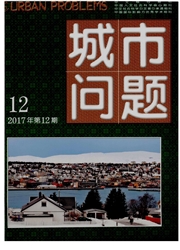

 中文摘要:
中文摘要:
合理的城市人口密度关系着城市经济与社会等各方面的发展。在2000年、2005年、2011年三个时间断面数据的支持下,以地级市及以上城市的市辖区人口密度为对象,从不同角度对中国城市人口密度的变化进行了统计描述,分析了中国城市人口密度格局及变化类型,并探讨了影响城市人口密度及其变化的因素。结果表明,十余年间全国的城市平均人口密度呈波动下降趋势,但不同地区、不同人口规模、不同行政划分的城市平均人口密度及其变化均存在差异;黄河下游流域与长三角是城市人口高度集聚的主要区域;人口密度变化类型包括五类,其中“一直升”型的城市数量最多,且在中部地区、四川盆地成片状分布。
 英文摘要:
英文摘要:
The rational urban population density concerns to the development of urban economy and society and other aspects. With the support of data in 2000, 2005 and 2011 and selecting the population density of cities at prefecture level and above as the study object, this essay describes the changes of urban population density from four angles and then analyzes the spatial patterns of urban population density and its basic types of changes. What' s more, the factors of affecting urban population density and its change are analyzed in brief. The results indicate that the average urban population density show a trend of fluctuating downward in more than ten years, but it comes with disparities in different regions, different population scales and different administrative divisions. Therefore, the catchment area of the Yellow River basin and Yangtze Delta Region are the main re- gions of populous cities. There are five varying types of urban population density, and cities belonging to the type of rising con- tinuously have the largest number and layout in central region, like Sichuan Basin with a sheet structure.
 同期刊论文项目
同期刊论文项目
 同项目期刊论文
同项目期刊论文
 期刊信息
期刊信息
